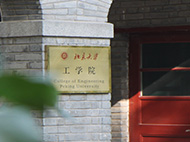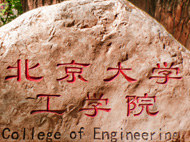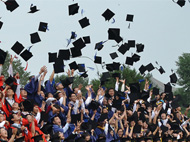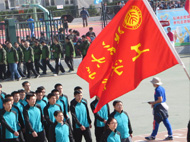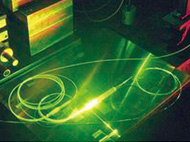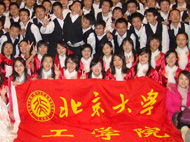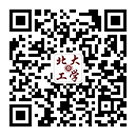主办:材料科学与工程系
报告人:Dr. Songshan Zeng,Prof. Chunxiu Zhang
时间:12月25日(周三)上午 9:00–10:00
地点:88858cc永利官网1号楼212会议室
主持人:于海峰 研究员
报告之一:Bio-inspired smart soft materials
Dr. Songshan Zeng
University of Connecticut,USA
e-mail : songshan.zeng@uconn.edu
主持人:于海峰 研究员
时间:12月25日(周三)上午 9:00–10:00
地点:88858cc永利官网1号楼212会议室
报告简介:(Abstract)
Smart soft materials, capable of changing optical properties and/or demonstrating shape reconfiguration as exposed to external stimuli, have attracted tremendous research interest. Since mother nature has demonstrated numerous intriguing samples in this field, three studies on smart materials learned from natural life will be present in this talk. (1) Inspired by the display tactics in marine life, we developed a deformation-controlled surface-engineering approach via strain-dependent micro-cracks and folds to realize a broad range of mechanochromic devices with high sensitivity and reversibility. This techique can be further combined with a three-dimensional integration approach to achieve a set of multi-stimuli responsive chromic devices for stretchable interactive electronics. (2) Mimicing the wrinkling on the wet finger, we also realized three types of moisture-responsive wrinkled devices through a single film–substrate system. These unique responsive dynamics motivated the invention of a series of optical devices triggered by moisture. A laser rewritable moisture responisve wrinkle surface was also developed. (3) Inspired by the remarkable shape adaptivity demonstrated in various biological systems, a stretchable, 3D tubular structure formed due to processing-induced wrinkles is proposed as a platform for adaptive stretchable electronics. It demonstrates unique 3D shape adaptivity, which can control the angular opening and closing of the tube through longitudinal strain. And this inspires the invention of a dual-level piezoresistive sensitivity strain sensor concomitant with mechanochromic effect and a tactile responsive artificial mimosa pudica device. In addition, the system is compatible with 2D film deposition technologies, which allows customized electrode patterns to be coated followed by be wrapped inside as precursor released and sealed. This “coating and self-wrapping” feature allows for the invention of a stretching insensitive tactile switch, and a stretchable tubular supercapacitor with dual stimuli-responsiveness.
报告人简介:
Postdoctoral Research Associate, University of Connecticut, 2018 to date
Ph.D. University of Connecticut, 2018
M.E. Sun Yat-sen University, 2012
B.S. Sun Yat-sen University, 2009
报告之二:盘状液晶与纳米超晶格结构
Discotic Liquid Crystals and their Superlattice Nanostructure
Prof. Chunxiu Zhang
张春秀 教授
Beijing Institute of Graphic Communication
北京印刷学院
e-mail : zhangchunxiu@bigc.edu.cn
主持人:于海峰 研究员
时间:12月25日(周三)上午10:00-11:00
地点:88858cc永利官网1号楼212会议室
报告简介:(Abstract)
Discotic liquid crystals (DLCs) were discovered in 1977. Their capability of self-assembling into one-dimensional columns via π-π stacking made them become great candidates for organic electronic devices, such as light emitting diodes, organic solar cells, and organic field effect transistors. The first synthesized superlattice based on alloy composition which exhibited intriguing charge transport properties was reported by Esaki and Tsu in 1970. It was expected to provide unique optical and electronic properties. The organic superlattice composed of alternating crystalline layers was provided by D.H.Yan et al. via the epitaxial growth method, which contained high density of electrons and holes leading to the enhancement of charge carrier transport property. The organic supperlatticeformed from the molecular self-assemble or self-organization has rarely been reported. As a new type of organic electronic materials, DLCs embraced a unique characteristic of self-assembling into columns via π-π stacking, which allowed charge carriers transport along the one-dimensional columns more efficiently. The supperlattice structure with one-dimensional periodical hexagonal and helical lattice was proposed by A.M. Levelut in 1979 and the charge carrier mobility of which can achieve 10-1 cm2/vs. The easy preparation of DLCs supperlatice as well as their high charge carrier mobility made them competitive in the field of organic electronics.To construct highly ordered molecular stacking structures as well as nanostructures with sophisticated optoelectronic properties by the assembly of discotic molecules is always an ultimate goal of researchers in the field of discotic liquid crystals (DLCs). DLCs are expected to be excellent charge carrier transport materials in optoelectronics devices such as field effect transistors, photovoltaic solar cells and light emitting diodes.
报告人简介:
1999年6月-教授 北京印刷学院
2011年8月-2012年3月 访问学者 美国 肯特大学 液晶研究所 Quan li小组
2011年3月-2013.9访问学者 88858cc永利官网 化学学院 陈尔强教授 小组
2009年12月-2010.2访问学者 东京工业大学 影像情报研究所 半那纯一(Junnich Hanna)研究室
欢迎广大师生光临!


